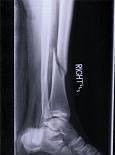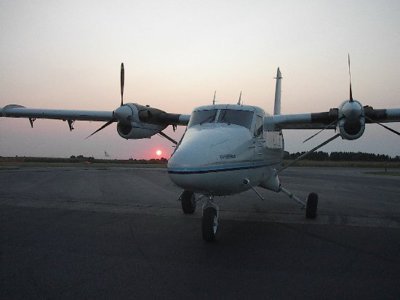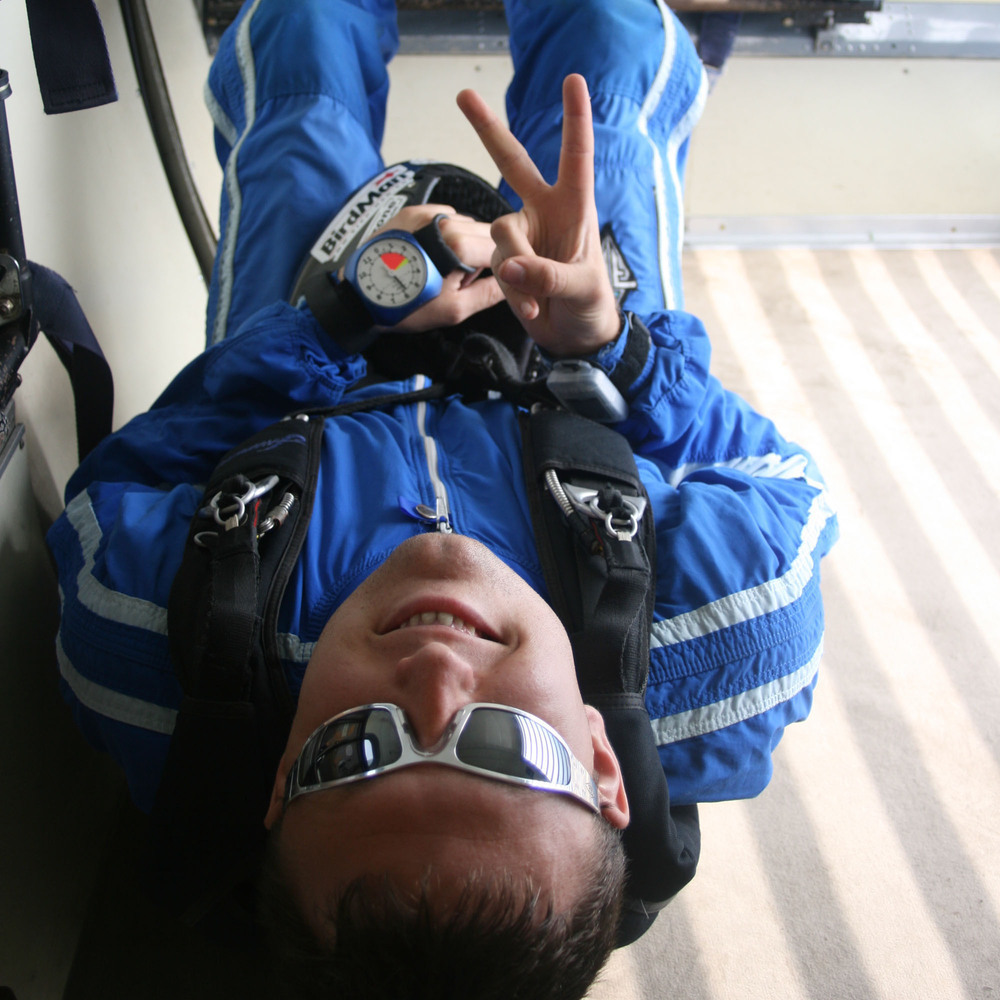Recommended Posts
Derekbox 0
The blind spot in your car isnt over the dash. But like most cars around the passenger door area on the left and right. The point is that car dashes dont cause blind spots rather that cars have blind spots.
There most definitely is a blind spot in front of a plane in a climb. The angle the nose is pointed up is not the same as the angle the plane is climbing. Even if it was, traffic climbing in the opposite direction at the same altitude would not be visible. Angle of attack makes the blind spot bigger.
When I fly, I won't simply point the nose up and climb at best rate of climb airspeed all the way up. Course I rarely have had the need or desire to go much over 3000 feet. But many pilots that have long climbs drop the nose a little, pick up some airspeed, and do a "cruise climb." I'll just drop the nose every so often and take a look ahead, or s-turn a little to use the side windows to see my path ahead.
ATC can help, but they are allowed to ignore VFR aircraft if they're busy. Avoiding traffic is all about looking where you're going. Take a look to the left, see if it's clear, then turn left. Keep flying toward big chunks of empty sky.
Dave
When I fly, I won't simply point the nose up and climb at best rate of climb airspeed all the way up. Course I rarely have had the need or desire to go much over 3000 feet. But many pilots that have long climbs drop the nose a little, pick up some airspeed, and do a "cruise climb." I'll just drop the nose every so often and take a look ahead, or s-turn a little to use the side windows to see my path ahead.
ATC can help, but they are allowed to ignore VFR aircraft if they're busy. Avoiding traffic is all about looking where you're going. Take a look to the left, see if it's clear, then turn left. Keep flying toward big chunks of empty sky.
Dave
Brains 2
Hey funks,
I used to ride right seat all the time when my buddy was flying for us. Next time, put on a headset and listen to all the info that the pilot is getting and sending. You will quickly learn that they ARE paying attention. I would also bet that while climbing he was in a steady left turn. He is looking out the left windo and up where he is going. That is what i observed anyway.
Never look down on someone, unless they are going down on you.
I used to ride right seat all the time when my buddy was flying for us. Next time, put on a headset and listen to all the info that the pilot is getting and sending. You will quickly learn that they ARE paying attention. I would also bet that while climbing he was in a steady left turn. He is looking out the left windo and up where he is going. That is what i observed anyway.
Never look down on someone, unless they are going down on you.
JohnMitchell 14
The pilot can't see the ground over the nose, but he can see where he is going, which is up, during the climb. The pilot is much closer to the windshield, so he has a much better view (duh). By moving his head around, he can see quite a bit. But every plane has it's blind spots. The Otter is no exception.
Depending on where you are flying, ATC will call all the traffic that shows up on radar. With that said, be advised that not all airplanes always show up on radar. Smart pilots keep up a good traffic scan. Some pilots don't. I've flown with both.
There are systems now that give traffic alerts for much less money than a complete TCAS system, but not quite as comprehensive. I wouldn't mind one on our aircraft.
Depending on where you are flying, ATC will call all the traffic that shows up on radar. With that said, be advised that not all airplanes always show up on radar. Smart pilots keep up a good traffic scan. Some pilots don't. I've flown with both.
There are systems now that give traffic alerts for much less money than a complete TCAS system, but not quite as comprehensive. I wouldn't mind one on our aircraft.
TCAD should be something most DZs with large turbines should consider. It's an extra level of safety.
Chris Schindler
www.diverdriver.com
ATP/D-19012
FB #4125
www.diverdriver.com
ATP/D-19012
FB #4125
The plane I fly is like a small otter with retractable gear and asume it has similar visibility out the front. Once you have been doing it a while you realize that although ATC provide a great service even though they are not required to do if you are VFR it is not something that should be relyed upon as they quite often don't tell you about aircraft that come very close. This may be because they are doing other things or the other aircraft does not have a transponder and they dont get a strong primary signal. The cruise climb idea although nice would probably get most jump pilots fired if they did it on every lift. Too many turns also degrades climb performance. If you move your head around you can see all the area from horizontally in front of you to quite a way below you either side of the nose all the way to vertically above you if you stick your head against the windshield and look up. The worst would be an aircraft comming slightly behind from the right and above on an intersecting course as that is where the pilot cannot see. It is one place that the jumpers can see as they sit by side windows. If you ever spot an aircraft and think it is comming close let the pilot know. The best way to tell if it is converging is it will not move in the window it will only get bigger. Never think that it is not worth telling the pilot about if it concerns you. An occasional turn is also a good idea to periodically check the area beneath and infront of the nose. If the pilot is just moving his eyes to look out the window he is not seeing as much sky as he should be. You should also assume that no other aircraft will see you.
Included a pic of a jump plane that I still find hard to beleive no one uses in the US.http://www.airliners.net/open.file?id=025878&WxsIERv=TNS%20A22O%20Abznq&WdsYXMg=Gur%20Sylvat%20Qhgpuzna&QtODMg=Ebggreqnz%20%28-%20Mrfgvraubira%29%20%28EGZ%20%2F%20RUEQ%29&ERDLTkt=Argureynaqf&ktODMp=Ncevy%2030%2C%201998&BP=0&WNEb25u=Rqjva%20Qbaqref&xsIERvdWdsY=A5190L&MgTUQtODMgKE=%28pa%20A22O-26%29.&YXMgTUQtODMgKERD=425&NEb25uZWxs=1999-02-26%2000%3A00%3A00&ODJ9dvCE=&O89Dcjdg=&static=yes&width=602&height=424&sok=JURER%20%20%28nvepensg%20%3D%20%27TNS%20A22O%20Abznq%27%29%20%20beqre%20ol%20cubgb_vq%20QRFP&photo_nr=27&prev_id=131295&next_id=NEXTID
Included a pic of a jump plane that I still find hard to beleive no one uses in the US.http://www.airliners.net/open.file?id=025878&WxsIERv=TNS%20A22O%20Abznq&WdsYXMg=Gur%20Sylvat%20Qhgpuzna&QtODMg=Ebggreqnz%20%28-%20Mrfgvraubira%29%20%28EGZ%20%2F%20RUEQ%29&ERDLTkt=Argureynaqf&ktODMp=Ncevy%2030%2C%201998&BP=0&WNEb25u=Rqjva%20Qbaqref&xsIERvdWdsY=A5190L&MgTUQtODMgKE=%28pa%20A22O-26%29.&YXMgTUQtODMgKERD=425&NEb25uZWxs=1999-02-26%2000%3A00%3A00&ODJ9dvCE=&O89Dcjdg=&static=yes&width=602&height=424&sok=JURER%20%20%28nvepensg%20%3D%20%27TNS%20A22O%20Abznq%27%29%20%20beqre%20ol%20cubgb_vq%20QRFP&photo_nr=27&prev_id=131295&next_id=NEXTID
PhreeZone 15
If I remember right that plane is not certified for sale in the US currently. I know thats the issue with some of the Anotov planes and the LET-410. Also I think it might be over the weight limit and require a full 2 person crew. I think the CASA 212-200 is the only jump plane in the US that requires a full crew currently.
Yesterday is history
And tomorrow is a mystery
Parachutemanuals.com
And tomorrow is a mystery
Parachutemanuals.com
The one I fly in the UK is on a US N registration operated under part 91 with one pilot. The owner bought it from a dealer in AZ (I think) before it was a jump plane it was operated by the US coastguard as a search and rescue aircraft in the florida keys. There are only 40ish left flying in the world most of them in Asia as military trainers for crews on their way to C130s. There are a few in the US, most of them up for sale as they aren't much good for anything apart from jumping out of. I beleive the center bought the one here for about 1/5th the price of an old caravan. It is an amazing plane. 8500lbs and our longest runway is grass and about 1800ft long, uses about 2/3rds of that to get in the air.
bob.dino 0
You're correct. The LET 410 does require a two-person crew. At least in Oz.
As for the Nomad, I believe it was quite a popular jumpship in Australia at one time. More details on the aircraft.
As for the Nomad, I believe it was quite a popular jumpship in Australia at one time. More details on the aircraft.







Share this post
Link to post
Share on other sites